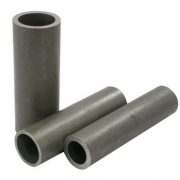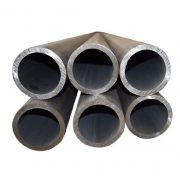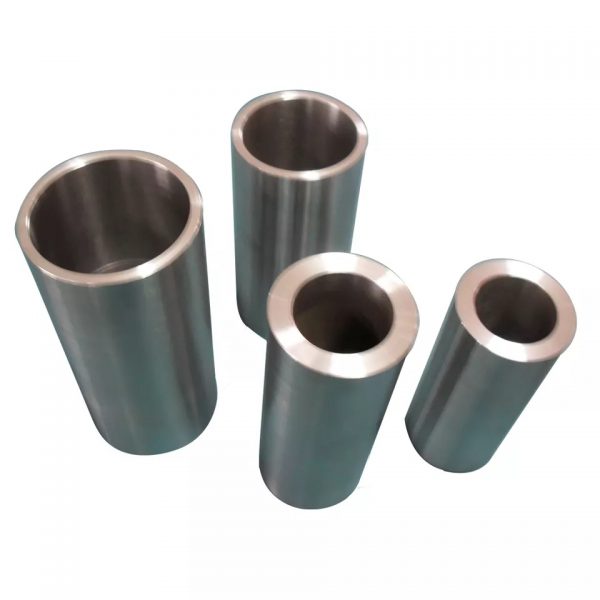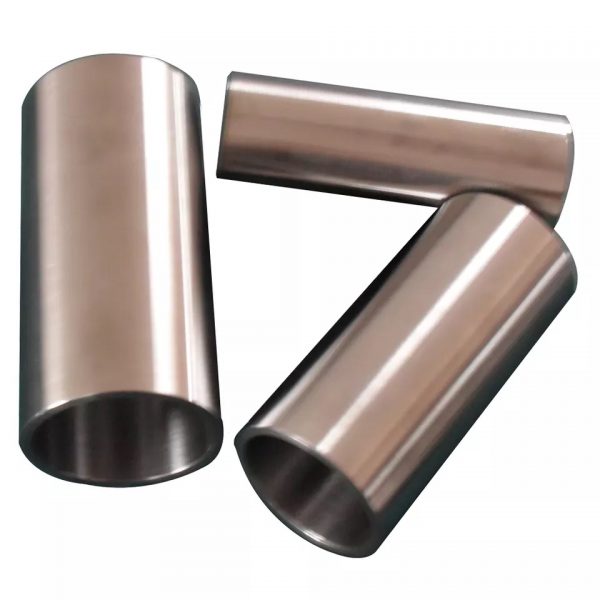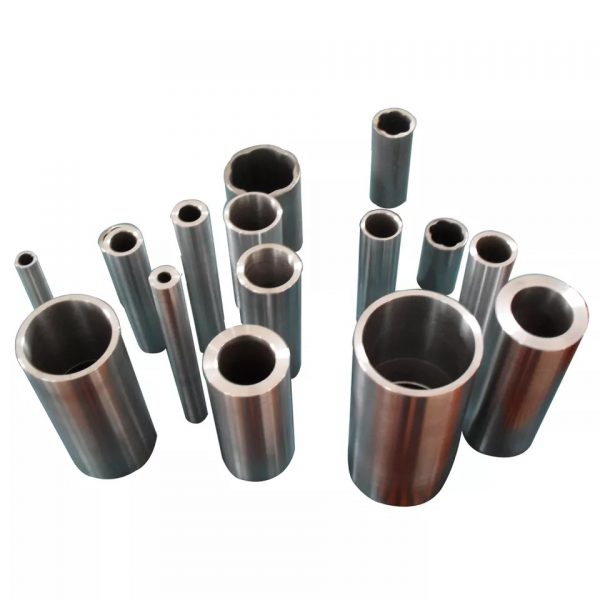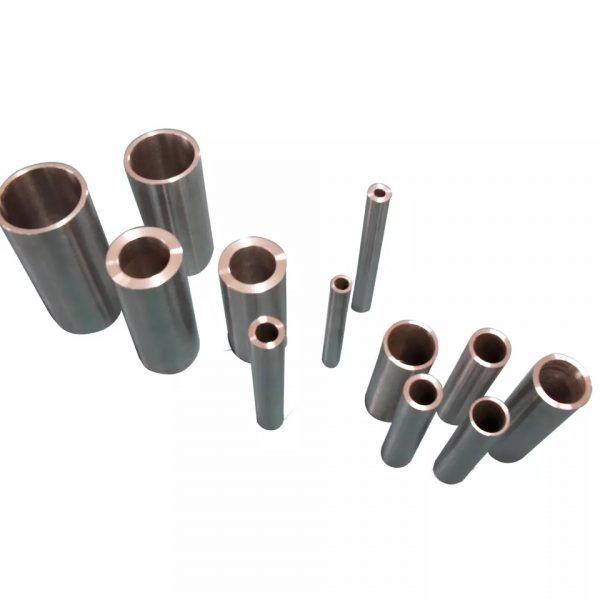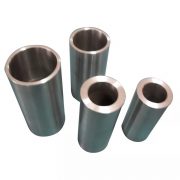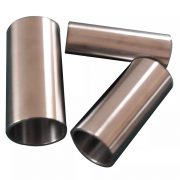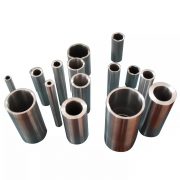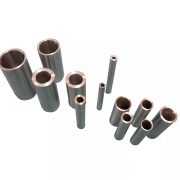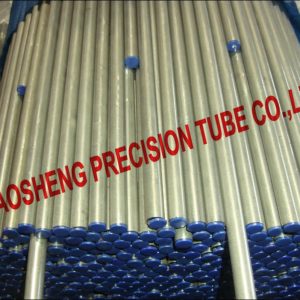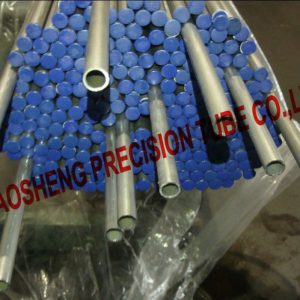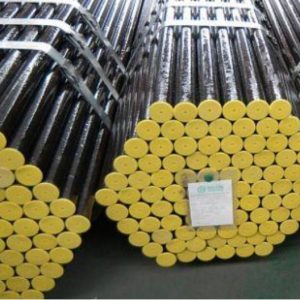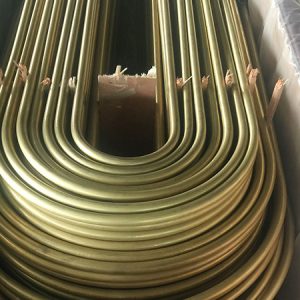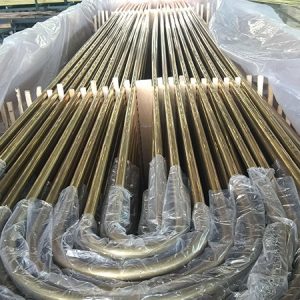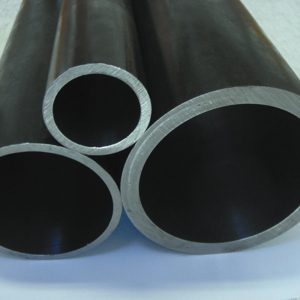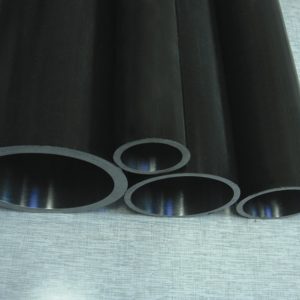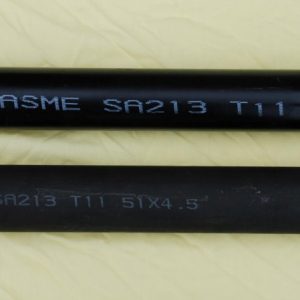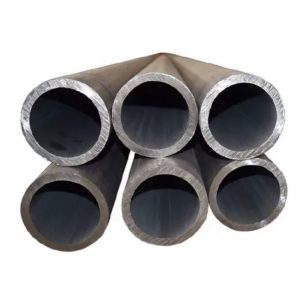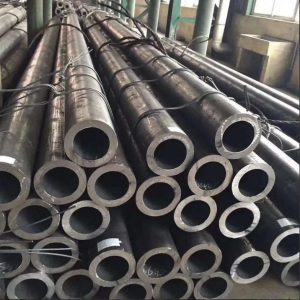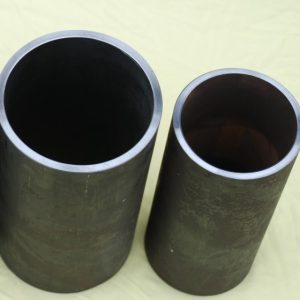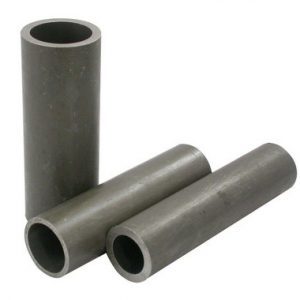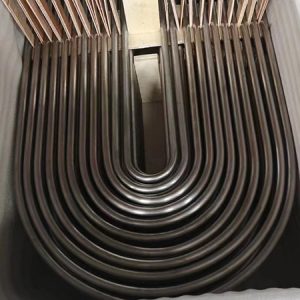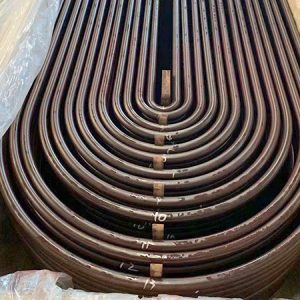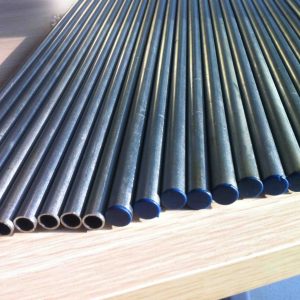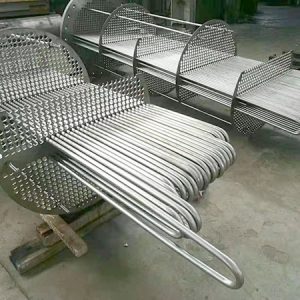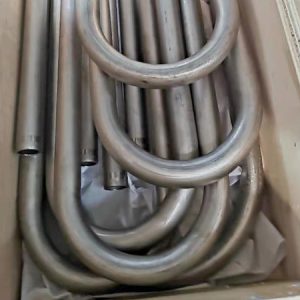100Cr6ベアリングスチールチューブ
軸受鋼管 熱間圧延または冷間圧延を指します (冷間引抜) シームレス鋼管 通常の転がり軸受リングの製造に使用. 鋼管の外径は25-180mmです, そして壁の厚さは3.5-20mmです, これは2つのタイプに分けることができます: 通常の精度とより高い精度. ベアリング鋼はボールを作るために使用されます, ローラーとベアリングリング. ベアリングは大きな圧力と摩擦の下で機能します, したがって、軸受鋼は高く均一な硬度が必要です, 耐摩耗性と高い弾性限界.
化学組成の均一性に対する要件, 非金属介在物の含有量と分布, 軸受鋼の炭化物の分布は非常に厳格です. これは、すべての鉄鋼生産で最も厳しい鋼種の1つです.
ご不明な点がございましたら, お問い合わせください sales@grandsteeltube.com
- 形容
- 照会
1. Relevant Steel Specification of 100Cr6 Bearing Steel
| Country | USA | German | Japan | British |
| 標準 | ASTM A295 | 騒音 17230 | JIS G4805 | BS 970 |
| Grades | 52100 | 100Cr6/1.3505 | SUJ2 | 535A99/EN31 |
2. Chemical Composition of 100Cr6 Bearing Steel and Equivalents
| 標準 | 等級 | C | ミネソタ | P | S | Si | ニ | クロム | 銅 | モー |
| ASTM A295 | 52100 | 0.93-1.05 | 0.25-0.45 | 0.025 | 0.015 | 0.15-0.35 | 0.25 | 1.35-1.60 | 0.30 | 0.10 |
| 騒音 17230 | 100Cr6/1.3505 | 0.90-1.05 | 0.25-0.45 | 0.030 | 0.025 | 0.15-0.35 | 0.30 | 1.35-1.65 | 0.30 | – |
| JIS G4805 | SUJ2 | 0.95-1.10 | 0.50 | 0.025 | 0.025 | 0.15-0.35 | – | 1.30-1.60 | – | – |
| BS 970 | 535A99/EN31 | 0.95-1.10 | 0.40-0.70 | – | – | 0.10-0.35 | – | 1.20-1.60 | – | – |
3. Mechanical プロパティ of DIN 100Cr6 Bearing Steel
| プロパティ | Metric | Imperial |
| Bulk modulus (typical for steel) | 140 GPa | 20300 KSIの |
| Shear modulus (typical for steel) | 80 GPa | 11600 KSIの |
| Elastic modulus | 190-210 GPa | 27557-30458 KSIの |
| Poisson’s ratio | 0.27-0.30 | 0.27-0.30 |
| 硬度, Brinell | – | – |
| 硬度, Knoop (converted from Rockwell C hardness) | 875 | 875 |
| 硬度, Rockwell C (quenched in oil from 150°C tempered) | 62 | 62 |
| 硬度, Rockwell C (quenched in water from 150°C tempered) | 64 | 64 |
| 硬度, Rockwell C (quenched in oil) | 64 | 64 |
| 硬度, Rockwell C (quenched in water) | 66 | 66 |
| 硬度, Vickers (converted from Rockwell C hardness) | 848 | 848 |
| Machinability (spheroidized annealed and cold drawn. Based on 100 machinability for AISI 1212 鋼鉄) | 40 | 40 |
- 100Cr6 Steel Physical Properties
| プロパティ | Metric | Imperial |
| 密度 | 7.81 グラム/センチメートル3 | 0.282 lb/in³ |
| 融点 | 1424°C | 2595°F |
- DIN 100Cr6 Alloy Steel Thermal Properties
| プロパティ | Metric | Imperial |
| Thermal expansion co-efficient (@ 23-280°C/73.4- 36°F, 焼なまし) | 11.9 µm/m°C | 6.61 µin/in°F |
| Thermal conductivity (typical steel) | 46.6 W/mK | 323 BTU in/hr.ft².°F |
4. Forging of DIN 100Cr6 Bearing Steel
DIN 100Cr6 alloy steel is forged at 927 to 1205°C, and should not be forged below 925ºC. A post-forge equalization treatment is recommended at 745ºC for 4-6 hours followed by air cooling for SAE/AISI 52100 鋼鉄.
5. Heat 処遇 for DIN 100Cr6 Bearing Steel
DIN 100Cr6 alloy bearing steel is heated at 816°C followed by quenching in oil. Before performing this process, it is subjected to normalizing heat treatment at 872°C followed by slowly cooling in order to reduce the machining stress.
Hot Working
DIN 100Cr6 bearing steels alloy can be hot worked at 205 to 538°C.
Cold Working
DIN 100Cr6 bearing steel can be cold worked using conventional techniques in the annealed or normalized conditions.
アニーリング
For spheroidize anneale, the following isothermal anneal is recommended:
- 1500ºF (815ºC) for 3 時間
- 1350ºF (735ºC) for 4 時間
- 1250ºF (675ºC) for 3 時間
- Slow cool to 1000ºF (540ºC) then air cool.
Quenching
DIN 100Cr6 alloy bearing steel could be hardened by quenching in water from 801-829 degree or quench in oil from 816-842 度.
Tempering
Temper to desired hardness as indicated by tempering curves after water or oil quench.
The special steel grades for bearing steel pipe production include the following (G marked with “rolling”): chromium bearing steel such as GCr6, GCr9 (SiMn), GCrl5 (SiMn); Chromium free bearing steels such as GSiMnV (Re), GSiMnMoV (Re), GMnMoV (Re); Carburized bearing steel such as G20CrMo, G20Cr2Mn2Mo; High carbon chromium stainless bearing steel such as 9Cr18 (モー), 等.
The smelting quality of bearing steel is required to be very high. It is necessary to strictly control the content of sulfur, phosphorus, hydrogen, 等。, as well as the quantity, size and distribution of non-metallic inclusions and carbides. Because the quantity, size and distribution of non-metallic inclusions and carbides have a great impact on the service life of bearing steel, bearing failure is often caused by the propagation of microcracks around large inclusions or carbides.
The content of inclusions is closely related to the oxygen content in steel. The higher the oxygen content, the more inclusions and the shorter the service life. The larger the particle size and uneven distribution of inclusions and carbides are, the shorter their service life will be. Their size and distribution are closely related to the smelting process used and the smelting quality. The main processes for producing bearing steel are continuous casting and electric furnace smelting+electroslag remelting process smelting. A small number of processes such as vacuum induction+vacuum self consumption double vacuum or+multiple vacuum self consumption are used to improve the quality of bearing steel.
ご不明な点がございましたら, お気軽にお問い合わせください sales@tubesolutions.com.cn

